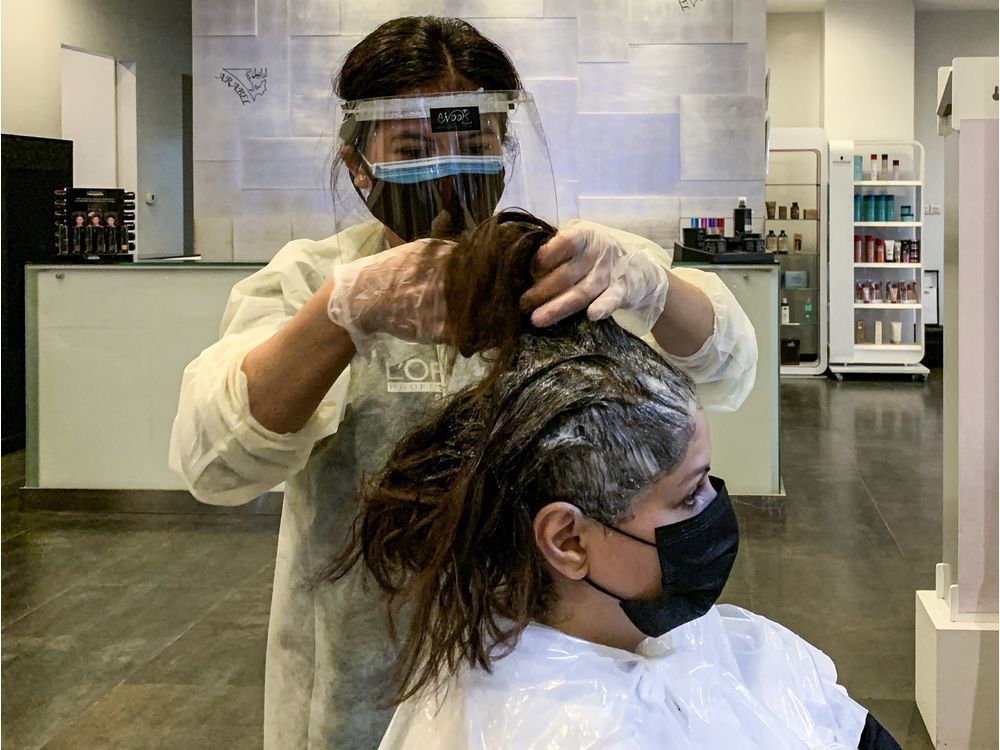as the era of social distancing continues on, many consumers, uncomfortable with visiting a spa or dermatologist for their beauty treatments, may be exploring at-home solutions. among the litany of personal grooming choices that now can be explored from the privacy of your own home is one type of device that has us scratching our heads: take-home laser hair removal devices. is that even safe?healthing.ca spoke to dr. lisa kellett, certified dermatologist and member of the
canadian dermatology association, about what consumers should know before they purchase an at-home device.
reduction, not removal
take home devices focus on reducing the amount of hair present in the treated area and will not necessarily permanently remove all of the hair, according to kellett. indeed, many consumers will find that a significant portion of their hair regrows a few years after the treatment.at-home hair removal devices are often not real lasers, instead issuing intense pulsed light. the light is absorbed by the dark melanin in the hair and causes it to heat up, damaging the follicle and preventing it from being able to re-grow new hair.effective hair reduction for both take-home and in-office devices will also take multiple sessions before consumers see results, because the hair must be in a specific phase of its cycle for the light to work.“at any point in time you do a treatment, you’re only going to get some of the hair,” says kellett. “so, you have to wait and keep going back.”
differences between take home and in-office devices
the primary difference between a take-home and an in-office device is the strength, says kellett. at-home devices usually take longer and require more sessions to see results.“you have to use an at home device over and over and over again versus coming in and using a stronger one,” says kellett. “it really depends on how often you want to use it, and how fast you want the hair gone.”the amount of sessions needed for effective in-office or at home removal depends on the type of hair and the contrast between the hair follicle and skin. according to kellett, good results usually start to occur at around four in-office sessions.
safety first
if you do choose to use a take-home device, kellett recommends that you don’t double pulse in one area as this can lead to damage. she also recommends that consumers be careful on sensitive skin like the bikini area and face, as the skin in these areas is thinner and more prone to burns.in home devices, a high contrast between the hair colour and skin tone is needed; darker skin tones may absorb the light, potentially causing burns.“i would caution anyone with a darker skin type to be careful,” says kellett. “i have seen burns.”she also cautions users to avoid moles. “i’ve seen melanomas be treated with these devices, which is a very bad idea,” she says.
look for approved devices
when purchasing a device, kellett recommends that consumers first make sure it is approved by health canada.according to current understanding, these devices are not a risk for causing skin cancer as visible light — the light used in these devices — does not damage dna in the same manner as ultraviolet radiation (uv). however, these lights and lasers are still strong enough to cause burns if not used correctly, so caution is always a must.
watch for signs of damage
after using these devices, if you continue to shave you may be at risk for folliculitis, inflammation of the hair follicle. often caused by an infection of damaged hair follicles, folliculitis looks like a cluster of red bumps or whiteheads and patients may feel an itchy or burning sensation,
according to mayo clinic. the condition may clear up on its own, but in some cases it can also lead to skin damage and scarring.if you notice any symptoms of folliculitis, kellett recommends contacting a dermatologist for a treatment recommendation.whatever you do, don’t be tempted to pop these bumps on your own — that could lead to scarring or worsen the infection.whether you choose to keep it, shave it, wax it, or fry it with a laser, hair removal is a personal decision. if you do plan to try out one of these devices at home, make sure you research the particular device before purchase and consult a dermatologist if you have any questions, concerns, or notice any skin damage after using.
emjones@postmedia.com |
@jonesyjourndon’t miss the latest on covid-19, reopening and life. subscribe to healthing’s daily newsletter covid life.
 3 minute read
3 minute read









